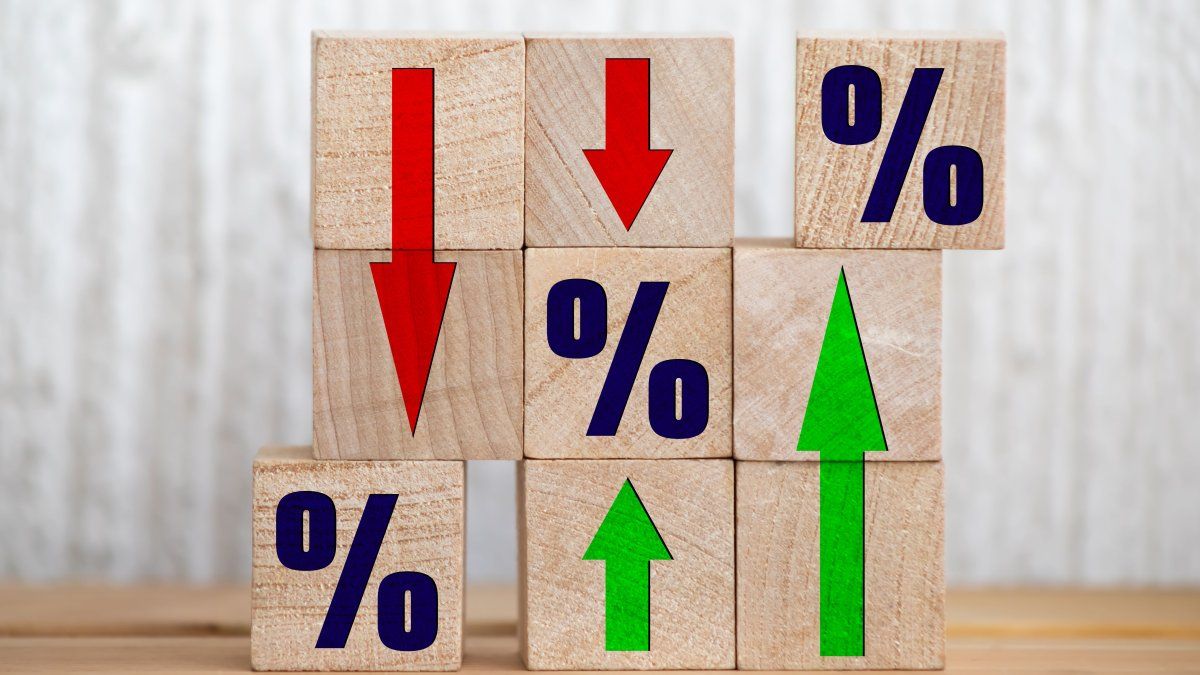Global markets are beginning to show that all roads lead to a lower interest rate. The 10-year Treasury bond reached a maximum of 5.0% per year, while on Friday it was trading at 3.67% per year. The rate fell by 26.6% in a short period of time. The Federal Reserve meets on September 18 and could lower the short-term rate.
The drop in international rates has had an impact on local corporate risk. PAE’s bonds maturing in 2027 yield 5.2% per year, YPF’s bonds maturing in 2029 yield 7.7% per year, and the same company’s bonds maturing in 2033 yield 8.10% per year. The gap between these bonds and US Treasury bonds of the same term is minimal: with PAE 2027 the gap is 1.5% per year, with YPF 2029 the gap is 4.2% per year, and with YPF 2033 the gap is 4.4% per year. Corporate risk is falling considerably and is approaching the average risk in Latin America, which is around 2.9% per year.
Sovereign bonds, such as the AL30, On August 5, the AL30 bonds yielded an internal rate of return of 31.2% per year, while they currently yield 23.5% per year, a decrease of 24.7% in a short period of time. If we measure these variations by parity, on August 5, the AL30 bond was worth US$46.8 while last Thursday it closed at US$55.3, which implies an increase of 18.2% in dollars. That doesn’t seem bad at all for the person who recommended it.
The country risk is very high, at 14.7% above the yields on US Treasury bonds. If we look at what is happening with corporate risk, we should not rule out a drop in country risk. Shares are moving ahead, showing a large rise, especially banks. On August 5, Grupo Financiero Galicia was worth US$26.0, and today it is worth US$40.6, which represented a rise of 56.2% in hard currency.
As if all this were not enough, the MEP dollar on August 5 was at $1,346, the blue dollar on the same date was worth $1,390. Currently, the MEP dollar is worth $1,252, which implies a drop of 7%. The blue dollar today is worth $1,240, which implies a drop of 10.8% since August 5. The proximity of the money laundering causes many economic agents to sell blue dollars to enter the money laundering in pesos for an amount less than $100 million, in order to recover said pesos after September 30 and be able to buy MEP dollars on the market.
It is more obvious than the tango “Caminito” that the blue dollar will fall in September, and that the MEP dollar could rise in October. All roads lead to the blue dollar being at a lower price than the MEP dollar in this scenario.
Are we getting out of the trap?
The government is in no hurry to get out of the trapwhich seems prudent to me. He inherited a negative reserve balance and an abundance of pesos equivalent to 2.5 monetary bases. There is no magic in economics, only the passage of time will create more demand for pesos and, concurrently, more dollars in reserves. The lowering of rates will boost the economy. In the last 5 months, secured loans in pesos have doubled and total loans have shown a very positive evolution, but they are still negative in real terms compared to a year ago.
The economy is undergoing a process of economic reactivation, it is not the same for all sectors, but we are on the right track. Money laundering will not bring a large amount of dollars to the reserves, but we will begin to live with a greater stock of dollars in the financial system and a genuine increase in business in the market. Injecting genuine money will make the tax base grow to collect taxes, will reactivate markets, as we will see in construction, and public securities will be more in demand in this context (remember that I can launder and buy bonds without paying the fine).
The lifting of the currency controls will occur when the monetary market is more consolidated. Meanwhile, many will be calling for an end to the currency controls, but few will explain the social consequences of a new exchange rate jump.
The government should focus on sectors that are experiencing an adverse scenario, such as the agricultural sector, which is suffering a sharp drop in international prices and has to face a new harvest with climatic uncertainty. We stand up and applaud, the reduction and total elimination of the country tax in December would be very good, but it would be good to consider a reduction in export duties for soybeans, corn and sunflowers with a view to the next campaign. It is not a sectoral claim, the numbers do not add up and with the announcement alone the decision-making process would be accelerated, which would bring with it more sales of inputs, machinery and a spillover of money from the countryside to the large urban centers.
Conclusion
. – The dollar has been a terrible business since the president took office. There is no devaluation when there is fiscal order and a surplus in the balance of payments.
. – There is no doubt that the corporate risk of Argentine companies is decreasing, which will bring with it more credit, investments and employment.
. – The reduction in corporate risk should bring with it a reduction in country risk; we are heading towards the eighth consecutive month of primary surplus and the seventh month of financial surplus.
. – This week we will know the inflation rate for August. In the last 4 months of this government, the inflation rate showed a monthly average of 5.8%, while the average rate for the last 4 months of Alberto Fernández, with Sergio Masa as minister, was 11.6%. All roads lead to an inflation rate of 4.0% for August and perhaps 3.0% for September. This will invite at some point to lower the interest rate and the devaluation rate of the peso. In this context, Argentina will see the country risk fall, and companies will have to work to go to a larger scale and generate more employment, if they want to maintain the profit rates they had in the past.
Source: Ambito
I am an author and journalist who has worked in the entertainment industry for over a decade. I currently work as a news editor at a major news website, and my focus is on covering the latest trends in entertainment. I also write occasional pieces for other outlets, and have authored two books about the entertainment industry.




